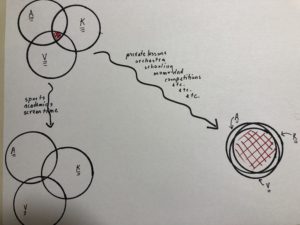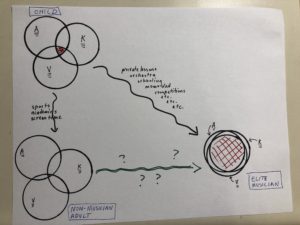This is a theory about learning to play a musical instrument. It is a framework for understanding the process; how that process might differ between children and adults; and the obstacles an adult beginner might face. Let’s begin.
There are 3 neuro-physiological systems of the human brain and body basic to playing an instrument: Auditory – the ability to hear and imagine sound; Kinesthetic – the ability to move one’s body to manipulate the instrument; and Visual – the ability to see notes on a page. 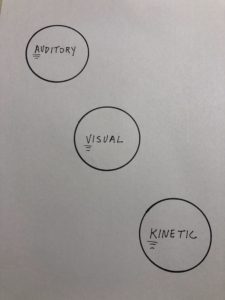
Granted, other human capabilities are also involved, such memory, intuition or emotion, but here we are only considering Auditory, Kinesthetic, and Visual.
In order to play a musical instrument using sheet-music (like chamber or orchestral music), these three neuro-pysiological systems must co-ordinate with each other and work together – they have to have some overlap. 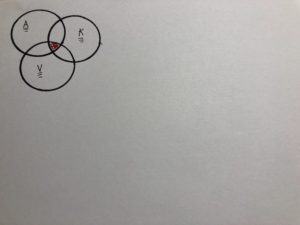
The process of learning to play a musical instrument from sheet-music could be considered a process of maximizing the overlap between these systems. After all, one has to be able to read, listen and move simultaneously in order to play in an orchestra. The more efficiently one can do so, the more complex music one might play.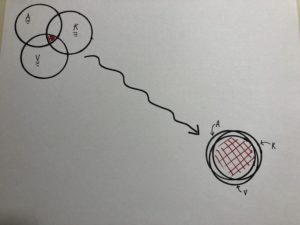
So if we take a child who has some minimal amount of overlap and provide said child with all, or even some, of the advantages of musical training – a brilliant teacher, a pre-conservatory program, all-state orchestra, transportation & fees from mom & dad, & etc. & etc. & etc, and if that child has determination and motivation and self-discipline and lack of other obligations, than she may grow up to be an elite professional musician, with her Audio & Visual & Kinetic systems functioning in a highly coordinated manner. (Note again that these are by far not the only characteristics necessary to become a musician, they are just the only ones we are considering at the moment.)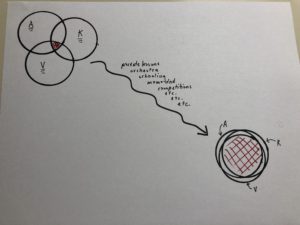
Now suppose the child chooses not to pursue music, and instead over the years focuses attention on other activities, such as sports, academics, or video games. The Audio, Visual and Kinesthetic coordination necessary for making music would atrophy as these systems are deployed to support other endeavors. It could be expected that as an adult, this person would have far, far less overlap, or coordination, between these three neuro-physiological systems than a musician would.
Now, what if that adult, with no musical training, decides to take up a musical instrument to play in an orchestra (note reading required!)? What then? What pedagogy and learning opportunities are available to this beginning adult to facilitate the coordination of their Audio, Visual and Kinesthetic processes?
Copyright 2018, All rights reserved.

